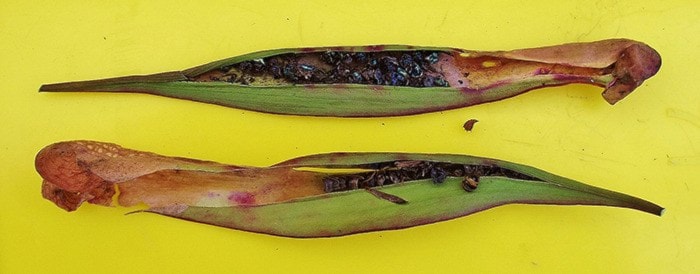I first wrote about the carnivorous plant trend last fall, but what has really impressed me of late is the unprecedented interest coming from rather unexpected quarters.
What’s different here is that kids are literally dragging their parents and grandparents to the local garden centre in search of those ‘plants that eat bugs’.
And they are not just coming to look at the sideshow. They are bringing with them a barrage of sensible questions.
On any given day I’ll be confronted with a flurry of queries. How do they eat the bugs? Do they have a stomach like us? Can they stay outside for winter? Will it bite me? How long do they live? Can I feed it? Do they need water?
Those basic questions are really important because they tell me that this group of plants has truly engaged kids and diverted their attention away from the usual distractions of computers, video games and even cell phones.
And anything that focuses their awareness towards the natural world, even for a brief period of time, gives me hope.
So it seems that we have a bit of a generational touchstone here and that this group of evolutionary plant freaks may be one of the few things to remind our children that nature and the natural world in general is breathtaking, and worth the effort to both explore in the present and preserve for the future.
So I thought that I would share several stories with you, just as a means of inspiration.
Two boys, about seven and 10 years old, came to the nursery recently with their father, who was looking for a number of shrubs and trees for his new landscape.
The older boy happened to notice the carnivorous plant sign on the way in and asked me in a very business-like manner: “where are the carney-vor-us plants?”
His father promised him he could see them right after he bought the shrubs he needed, which meant that we heard “can I see the carney-vor-us plants now?” about every two minutes.
When we finally got to the carnivorous plant section, the older boy introduced his brother to the Venus fly traps (Dionaea muscipula) and sundews (Drosera), but he discovers pitcher plants (Sarracenia) for the first time and asked how they catch their prey.
As luck would have it, a fly had landed on the lip of a nearby specimen, but the overhanging lid prevented us from peering deeper into the ‘tube of death’, which is simply a modified leaf with slippery sides and downward facing hairs.
So I cut off one of the older tubes that had fallen over and split it in half, revealing a solid core of fly and wasp carcasses. He was so impressed by the sheer volume of bugs and the fact that even nasty wasps could fall prey that he decided, then and there, that Sarracenias were the plants for him, and suddenly the chorus of “can I see the carney-vor-us plants” changed to, “daddy, I want a pitcher plant.”
A grandmother brings her teen-aged granddaughter and younger grandson out for a trip to buy some summer flowers.
The granddaughter quickly diverts her to the carnivorous plant section, where she is fascinated by the antler-like tentacles of the fork-leaved sundew (Drosera binata var. multifida).
She also notices that the tentacles are covered in tiny fungus gnats and asks if they can be kept inside as houseplants while reminding her grandma of all the fruit flies plaguing her kitchen.
She left with a sundew and a smile.
Mike Lascelle is a local nursery manager and gardening author. Check out his blog at www.soulofagardener.wordpress.com.
